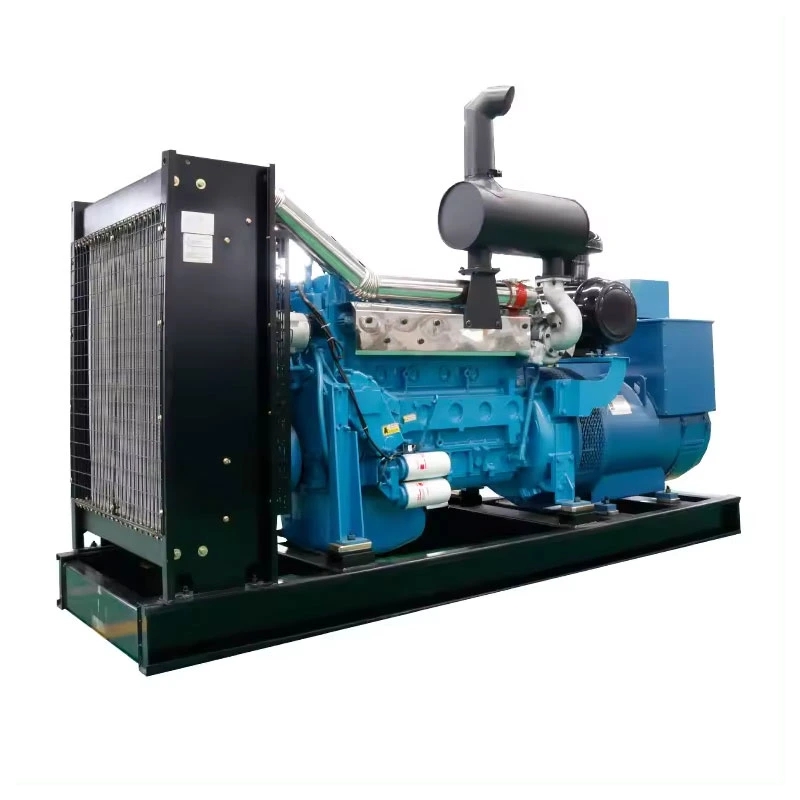Introduction
In today's world, the demand for reliable and continuous power supply is ever-increasing. Industries, commercial buildings, data centers, hospitals, and even residential areas rely heavily on electricity to function efficiently. In order to meet this demand, many organizations and individuals turn to diesel generators for their robustness and reliability in providing backup power during outages.
Diesel generators are known for their ability to deliver high power outputs and long-running capabilities, making them a popular choice for backup power solutions. In situations where the power demand exceeds the capacity of a single generator, parallel operation of multiple diesel generators becomes necessary to meet the load requirements effectively. This article aims to provide a comprehensive guide to diesel generators for parallel operation, exploring the benefits, challenges, and best practices associated with this setup.
Understanding Diesel Generators for Parallel Operation
1. Overview of Diesel Generators
Diesel generators are a type of internal combustion engine that converts diesel fuel into electrical energy through the process of combustion. They consist of a diesel engine, an alternator, a fuel system, a cooling system, and a control panel. Diesel generators are commonly used as standby or backup power sources due to their reliability, fuel efficiency, and high power output capabilities.
2. Parallel Operation of Diesel Generators
Parallel operation of diesel generators involves connecting multiple generators in parallel to increase the total power output and ensure redundancy in case of a failure. This setup allows for better load sharing, improved efficiency, and increased system reliability. By synchronizing the generators' output voltages and frequencies, they can work together seamlessly to provide the required power to the load.
Benefits of Parallel Operation
1. Increased Power Output: One of the primary advantages of parallel operation is the ability to increase the total power output by combining the capacities of multiple generators. This is particularly useful in situations where the power demand exceeds the capacity of a single generator.
2. Improved Efficiency: Parallel operation allows for better load sharing among the generators, resulting in a more balanced distribution of the load. This helps prevent overloading of individual generators and ensures optimal efficiency in power generation.
3. Enhanced Reliability: By having multiple generators operating in parallel, the system gains redundancy in case of a generator failure. This redundancy ensures continuous power supply to the load, minimizing downtime and disruptions.
4. Scalability: Parallel operation offers scalability by allowing additional generators to be added to the system as the power demand grows. This flexibility makes it easier to expand the power capacity of the system without the need for major upgrades.
Challenges of Parallel Operation
1. Synchronization Issues: One of the key challenges in parallel operation is ensuring that all generators are synchronized in terms of voltage, frequency, and phase angle. Any discrepancies in these parameters can lead to power quality issues and potential damage to the connected load.
2. Load Sharing: Achieving proper load sharing among the generators can be challenging, especially when the load fluctuates dynamically. Improper load sharing can result in overloading of certain generators, reducing their efficiency and reliability.
3. Control System Complexity: Managing multiple generators in parallel requires a sophisticated control system that can monitor and adjust the operation of each generator. The complexity of the control system can pose challenges in terms of setup, maintenance, and troubleshooting.
Best Practices for Parallel Operation
1. Proper Synchronization: Ensuring that all generators are synchronized is crucial for the successful parallel operation. This involves matching the voltage, frequency, and phase angle of each generator before connecting them in parallel. Using synchronization panels and automatic voltage regulators can help achieve accurate synchronization.
2. Load Sharing Control: Implementing a reliable load sharing control system is essential for balancing the load among the generators. This system should be able to monitor the load demand in real-time and adjust the output of each generator accordingly to prevent overloading.
3. Regular Maintenance: Performing routine maintenance and inspections on the generators is important to ensure their optimal performance in parallel operation. This includes checking fuel levels, oil quality, cooling systems, and electrical connections to prevent any issues that could disrupt the operation.

4. Training and Monitoring: Providing proper training to operators and maintenance personnel is essential for the safe and efficient operation of diesel generators in parallel. Monitoring the performance of the generators regularly and addressing any deviations promptly can help prevent failures and ensure continuous power supply.
Conclusion
Diesel generators for parallel operation offer a reliable and efficient solution for meeting high power demands and ensuring continuous power supply in critical applications. By understanding the benefits, challenges, and best practices associated with parallel operation, organizations and individuals can optimize the performance of their backup power systems and minimize the risk of power disruptions. With 400kw diesel generator , load sharing control, maintenance, and monitoring, diesel generators can work together seamlessly to deliver the required power output and enhance system reliability.
